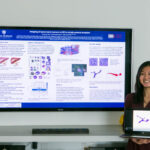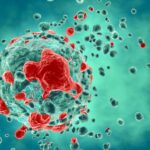DNA folded into shapes offers alternative gene delivery vehicle
Using snippets of DNA as building blocks to create nanoscale rods, worms and spheres, researchers at Johns Hopkins and Northwestern universities have devised a means of delivering gene therapy that avoids some of the undesirable aspects of using viruses to deliver genes to treat disease. The shape and size of the DNA-based nanoparticle also affected how well the genes were delivered.
Worm shapes, for example, were particularly effective.
“The worm-shaped particles resulted in 1,600 times more gene expression in the liver cells than the other shapes,” said Hai-Quan Mao, an associate professor ofmaterials science and engineering in Johns Hopkins’ Whiting School of Engineering. “This means that producing nanoparticles in this particular shape could be the more efficient way to deliver gene therapy to these cells.”
This study was published in the Oct. 12 online edition of Advanced Materials.
Initial funding for the research came from a seed grant provided by the Johns Hopkins Institute for NanoBioTechnology, of which Mao is an affiliate. The Johns Hopkins-Northwestern partnership research was supported by a National Institutes of Health grant.
Latest Posts
-
 Q&A with PSON Intern Jocelyn Hsu
August 19, 2021
Q&A with PSON Intern Jocelyn Hsu
August 19, 2021
-
 Start Up Founders from Johns Hopkins Aim to Stop Spread of Cancer
August 3, 2021
Start Up Founders from Johns Hopkins Aim to Stop Spread of Cancer
August 3, 2021
-
 Protein Appears to Prevent Tumor Cells from Spreading Via Blood Vessels
July 15, 2021
Protein Appears to Prevent Tumor Cells from Spreading Via Blood Vessels
July 15, 2021


